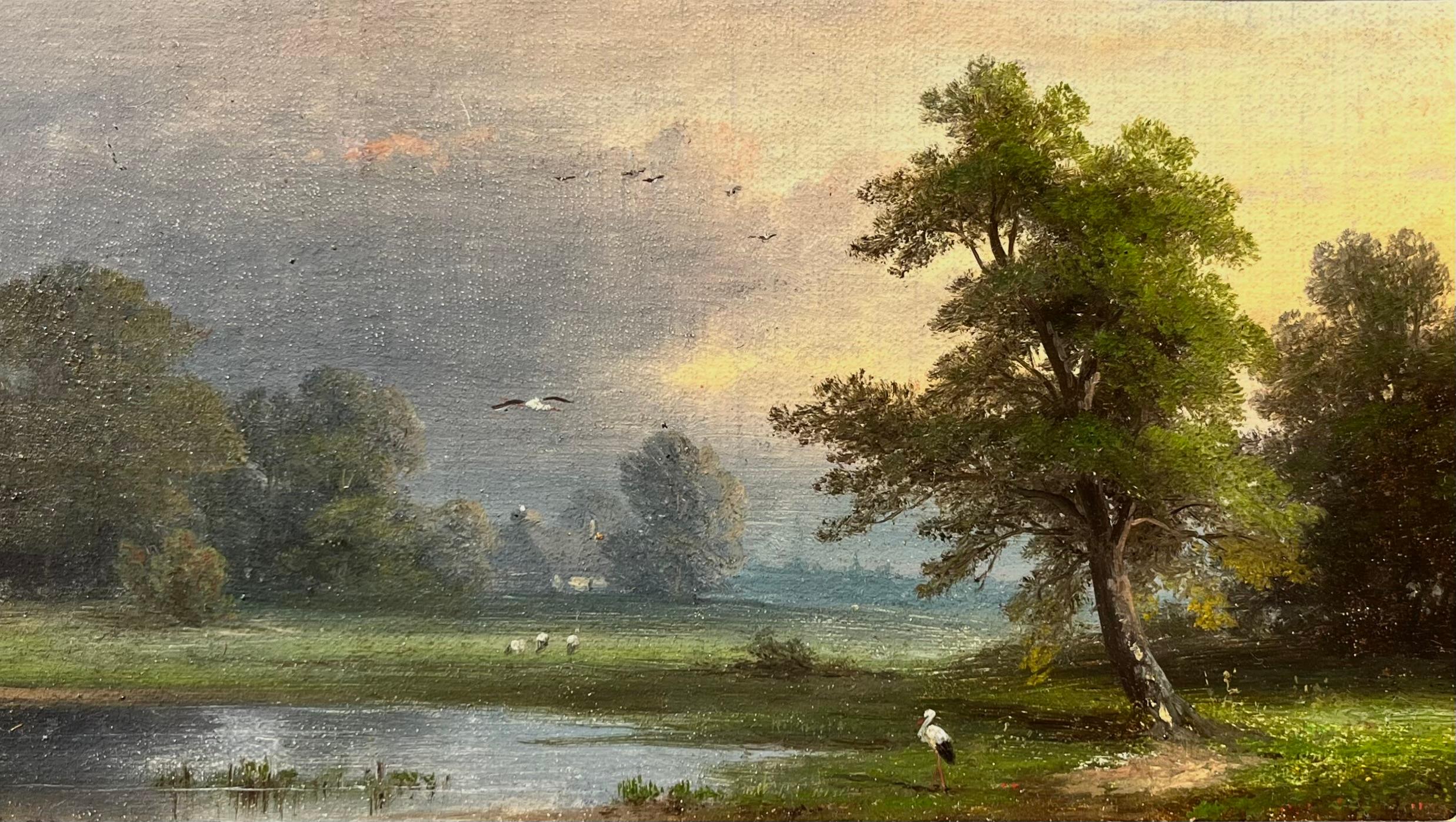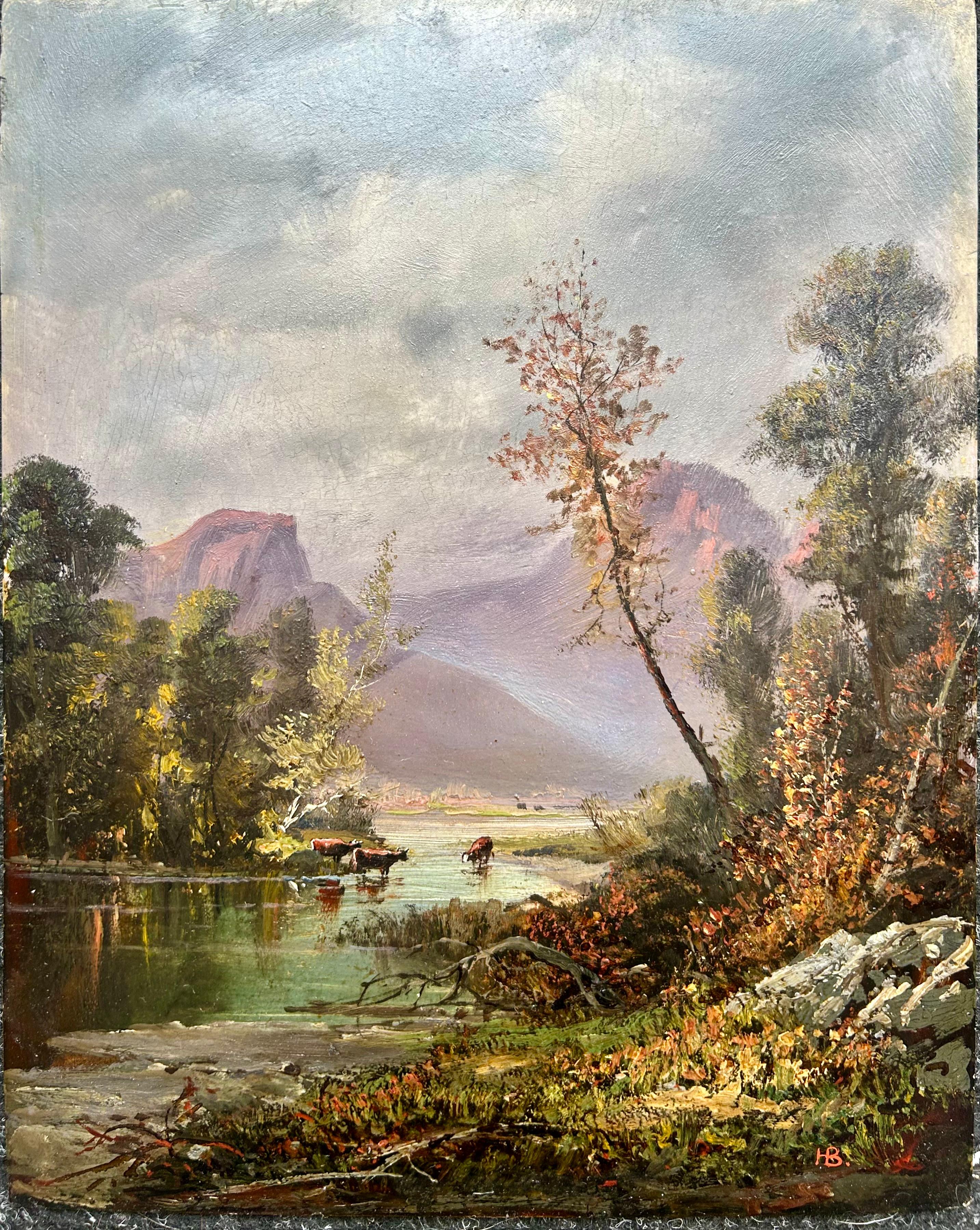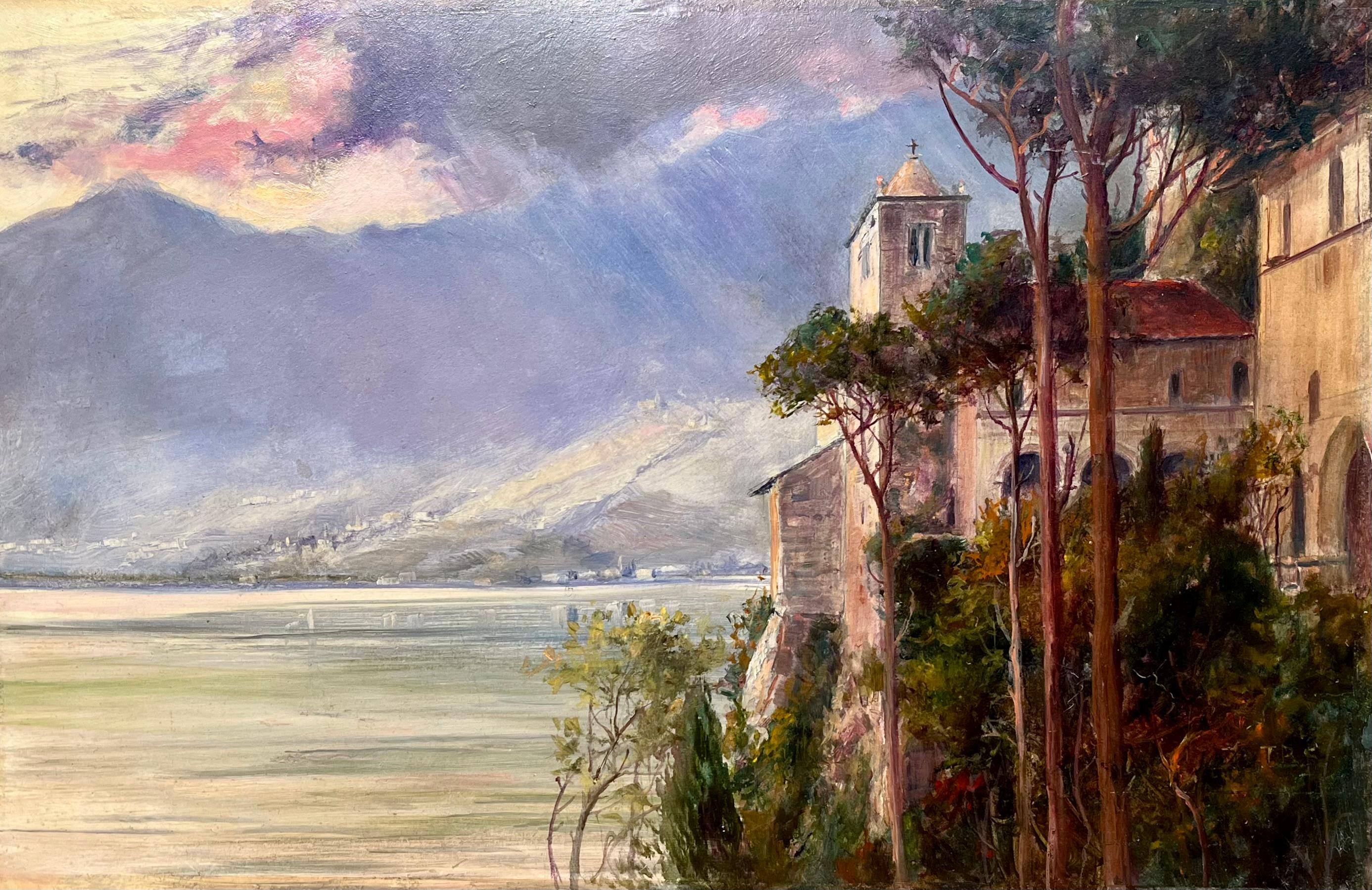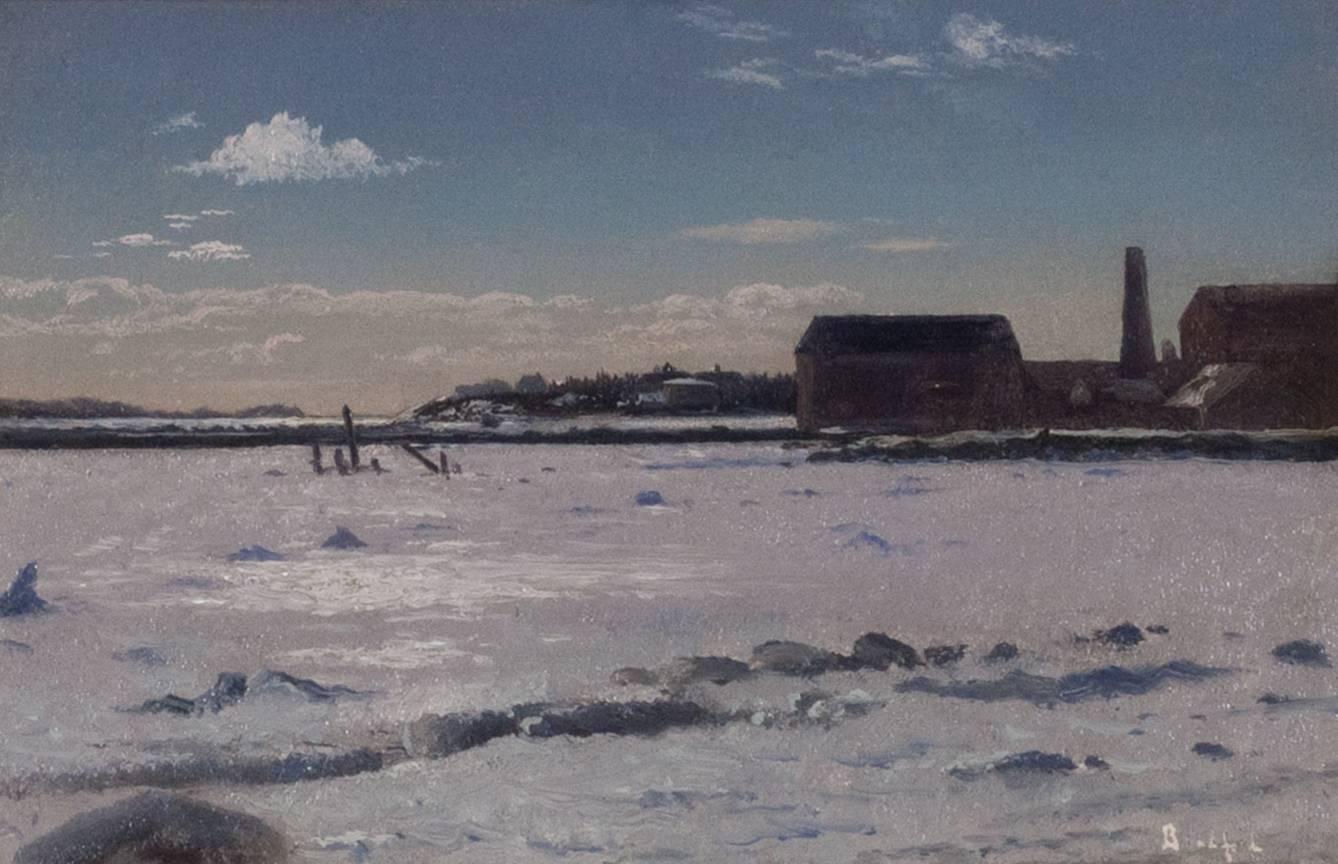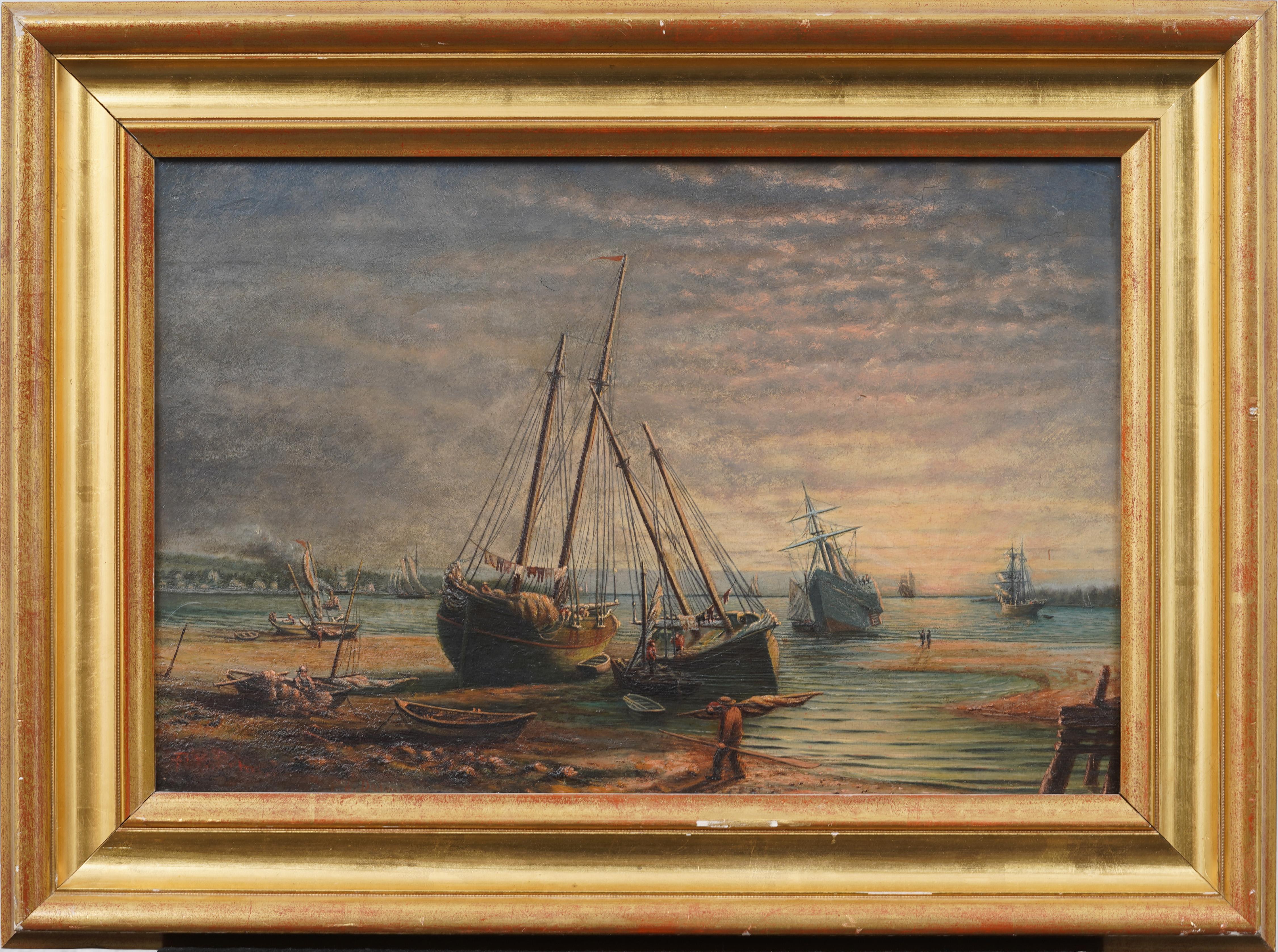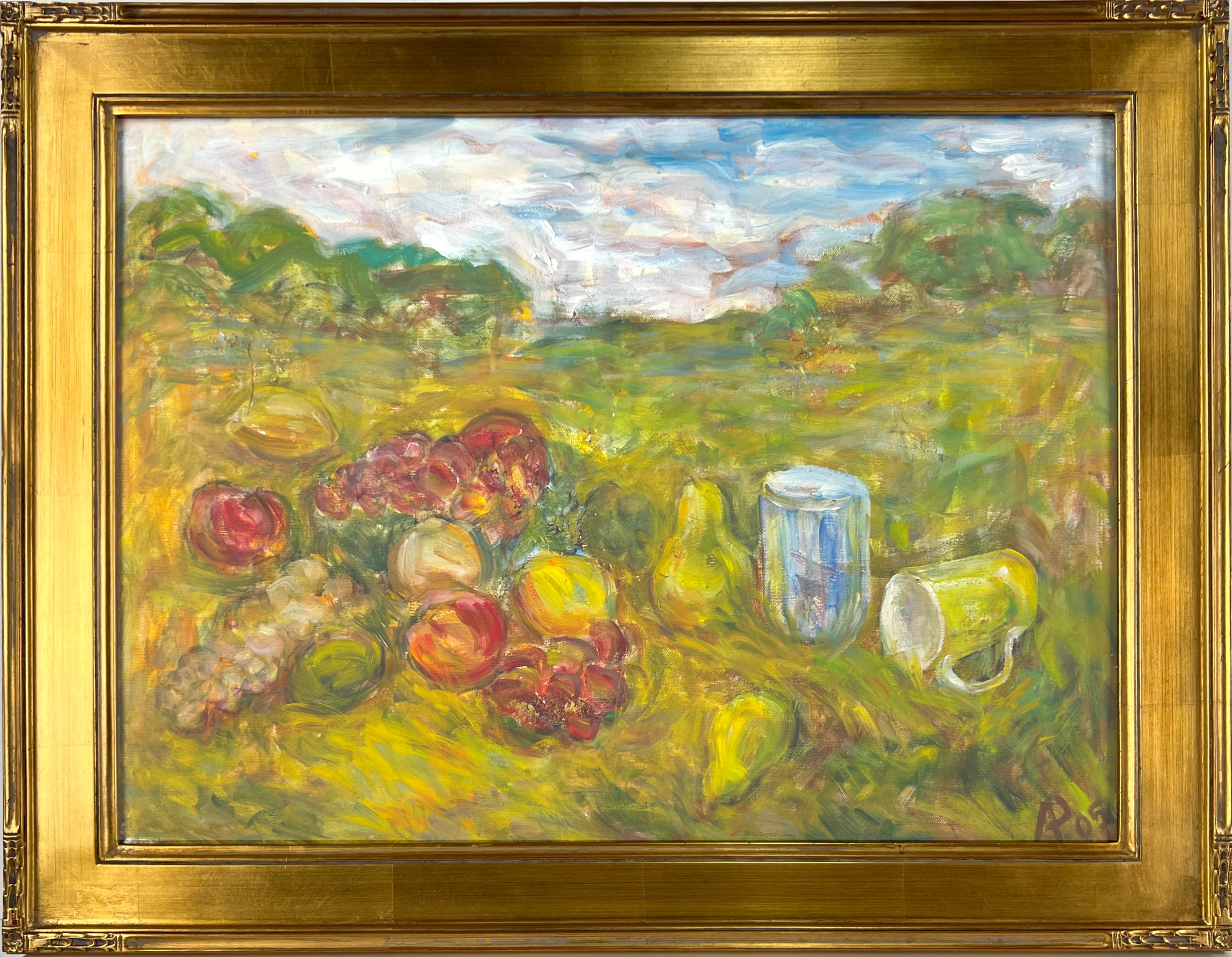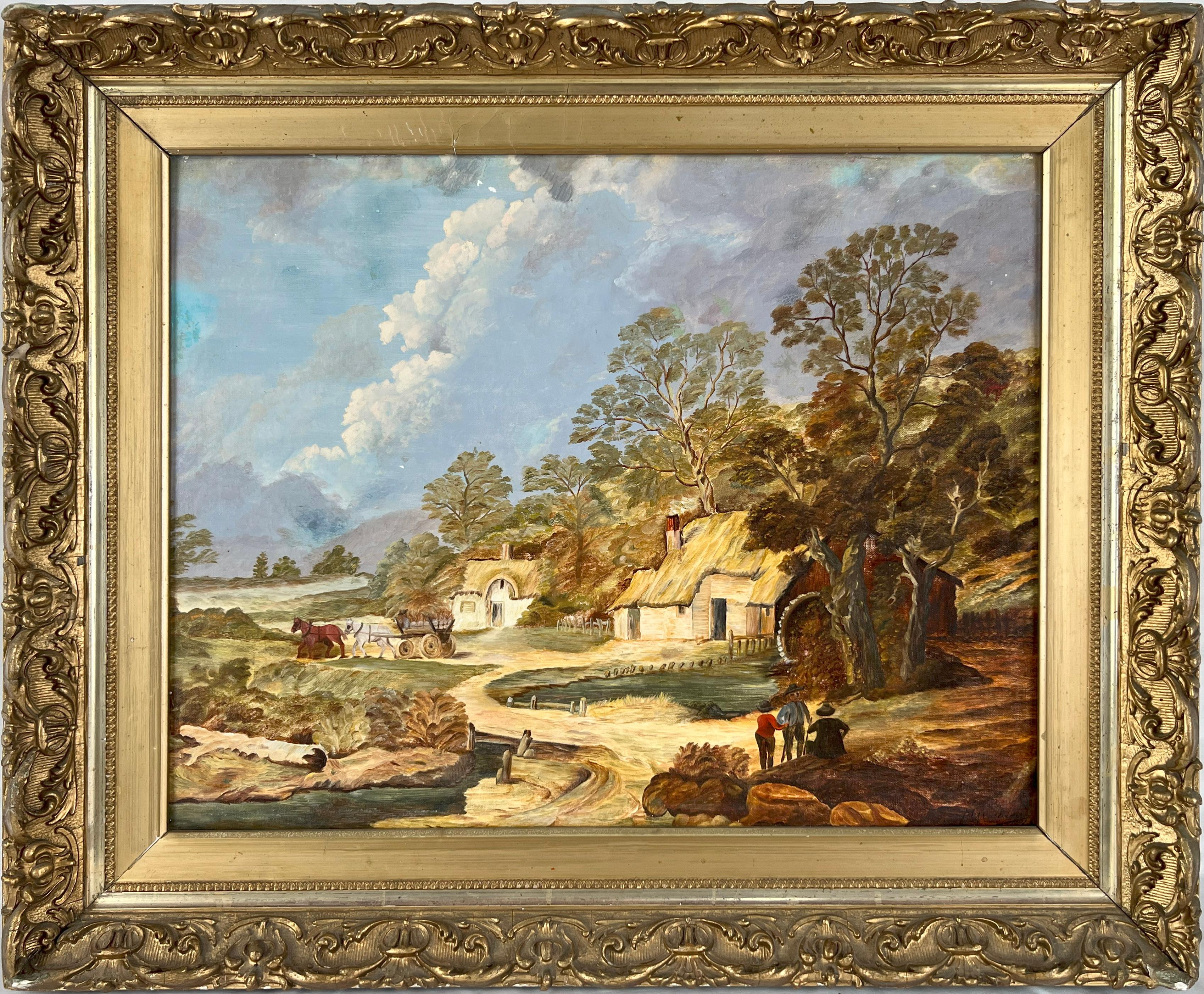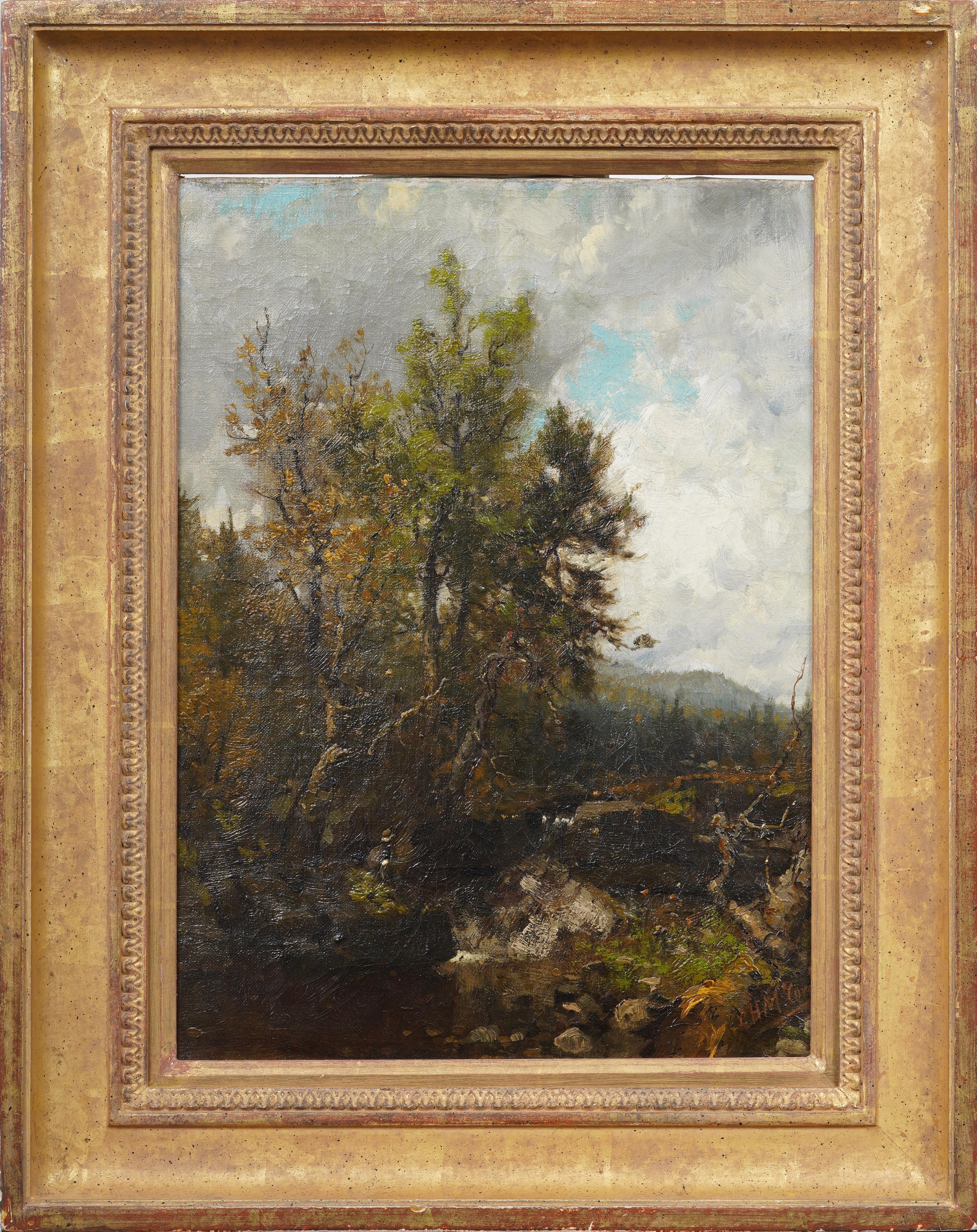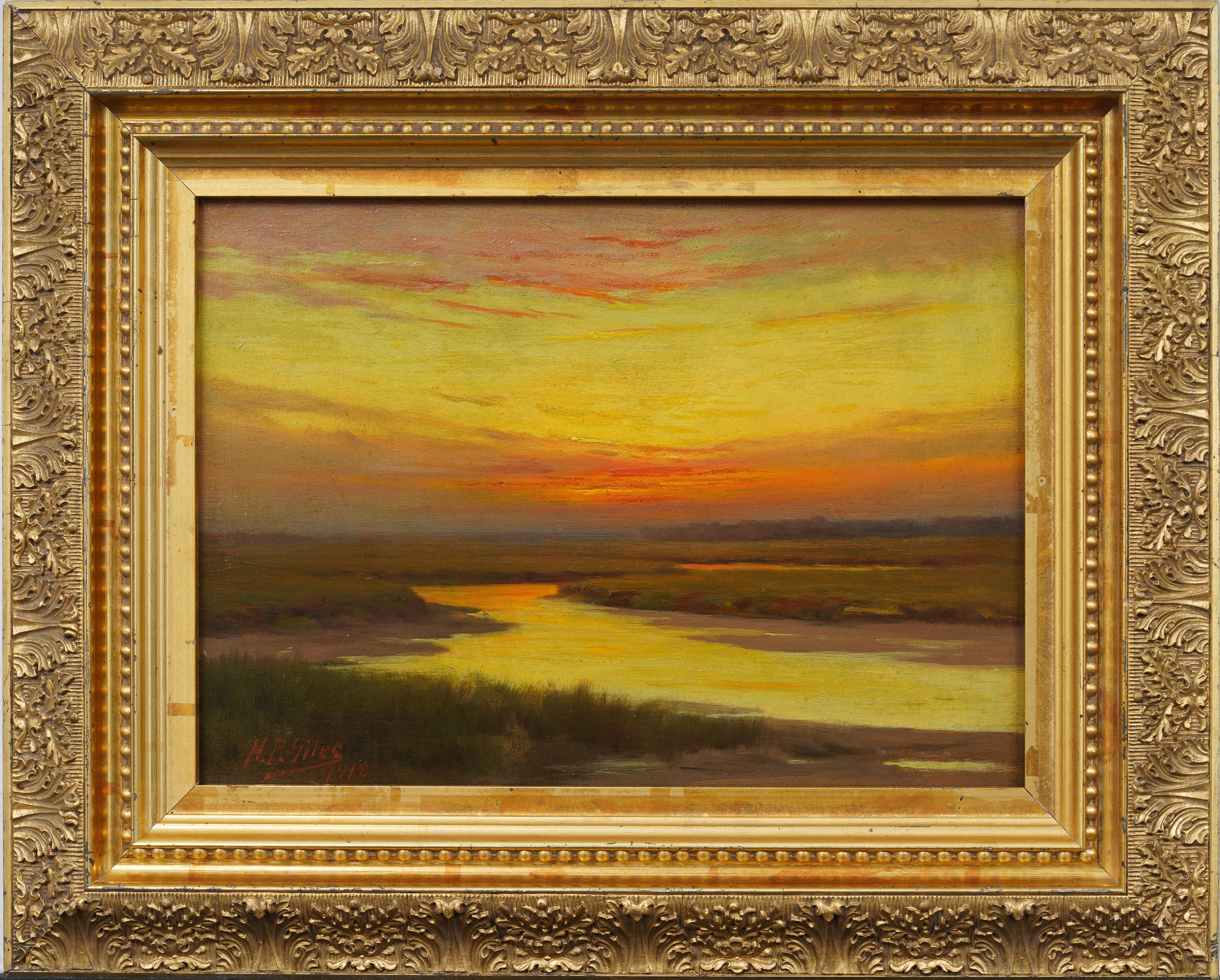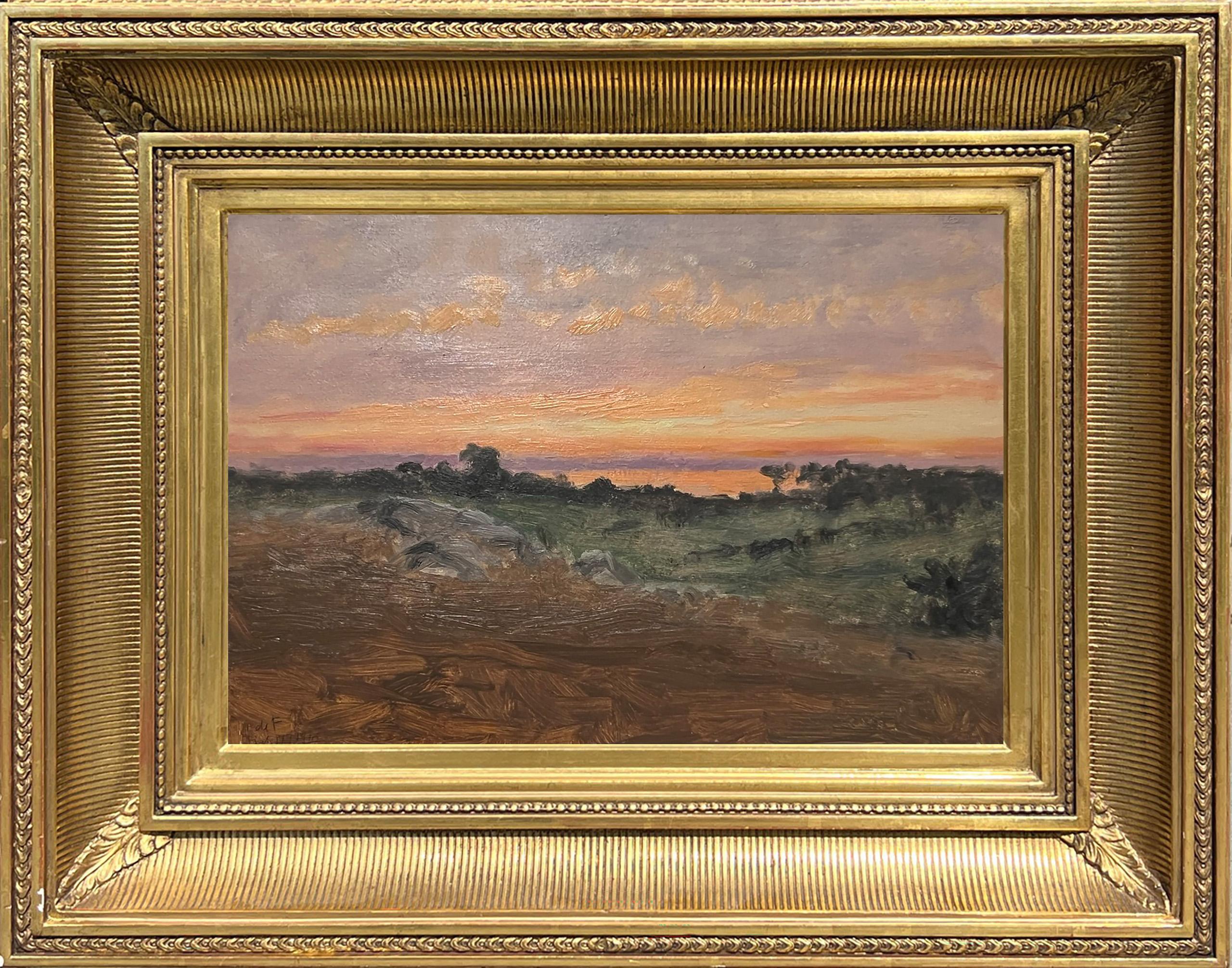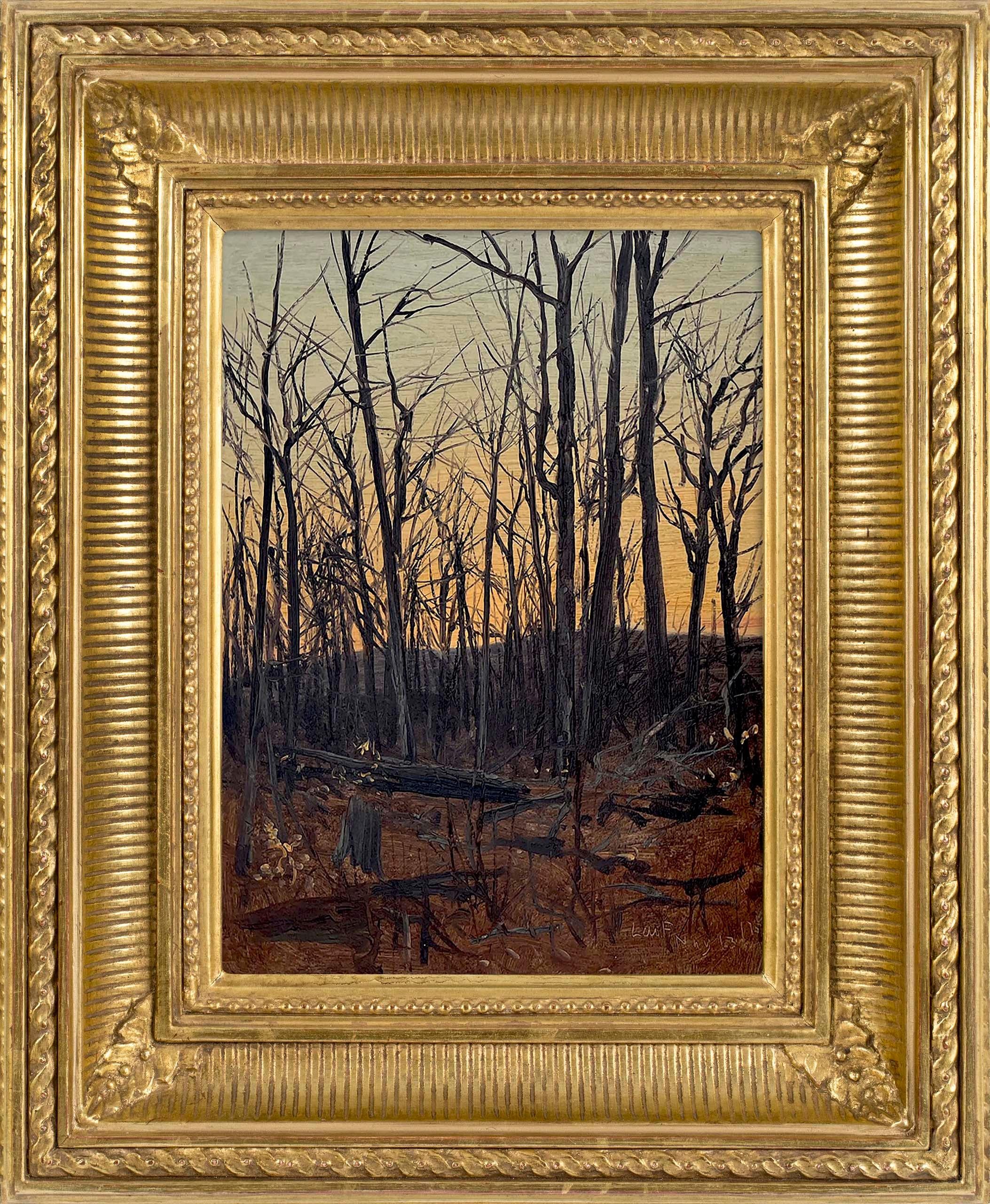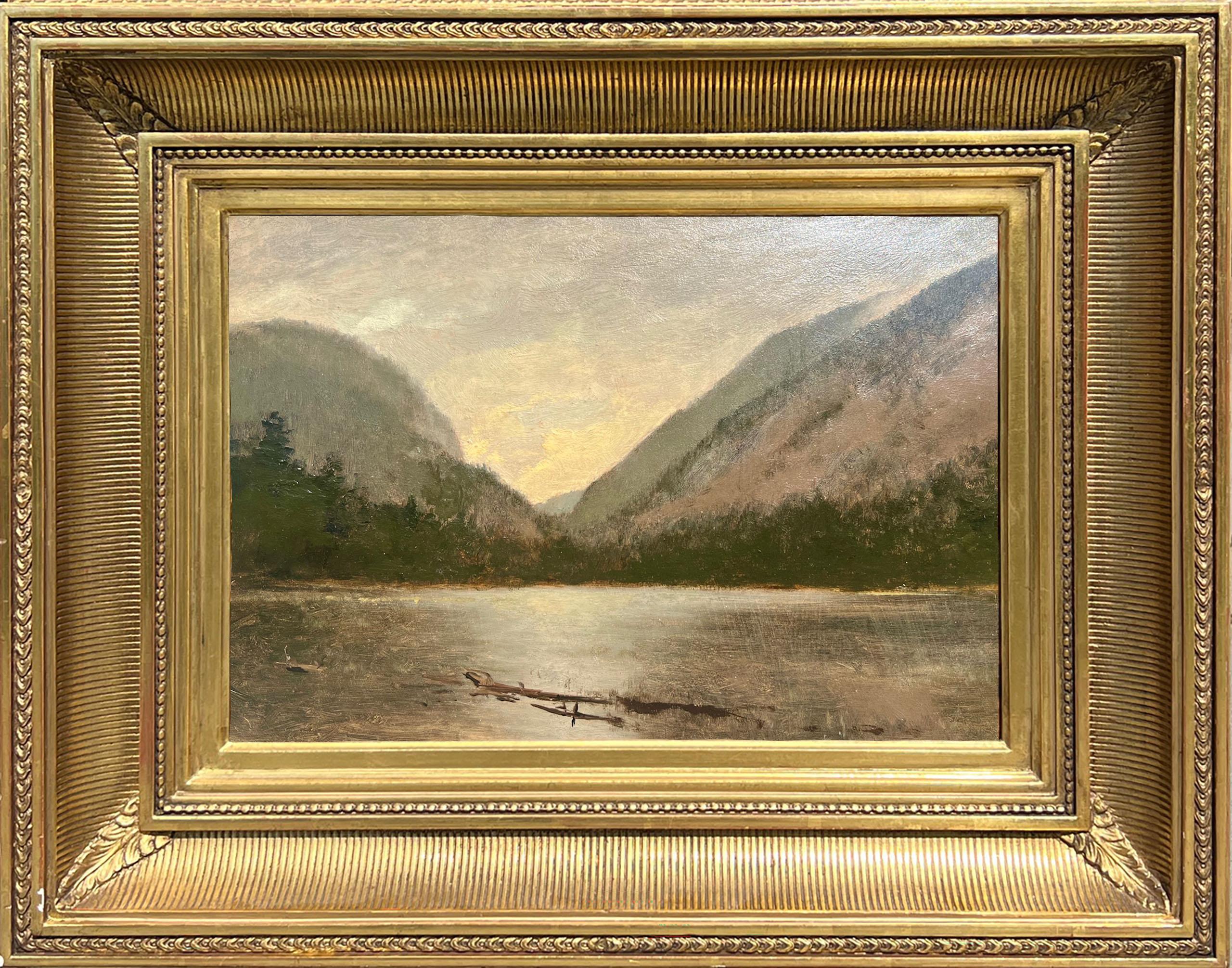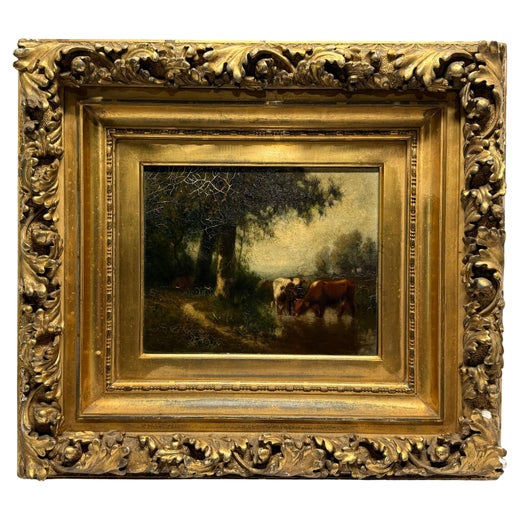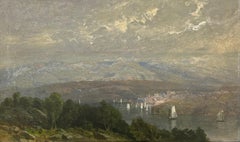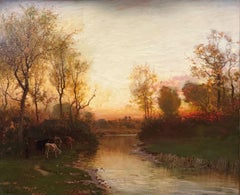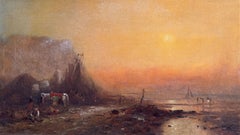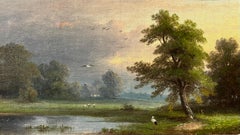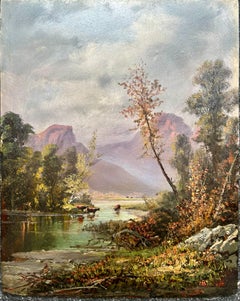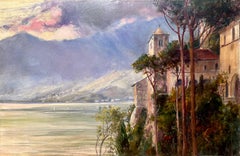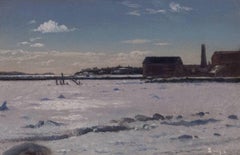"Summer Landscape on the River, " William Hart, Hudson River School, Catskills
View Similar Items
Want more images or videos?
Request additional images or videos from the seller
1 of 9
William Hart"Summer Landscape on the River, " William Hart, Hudson River School, Catskills
$7,000List Price
About the Item
- Creator:William Hart (1823 - 1894)
- Dimensions:Height: 10 in (25.4 cm)Width: 13.5 in (34.29 cm)
- Medium:
- Movement & Style:
- Period:
- Condition:
- Gallery Location:New York, NY
- Reference Number:1stDibs: LU1841210631392
William Hart
Born in Scotland, William Hart emigrated with his family to New York on the ship Camillus in 1830. He became known for serene, bucolic and romantic landscapes. Many of his paintings had cattle and realistic figures diminished in the landscape, a motif he began in the late 1880s. Hart was a second generation "Hudson River School" painter. George Inness and Asher Durand were major influences, although he was basically self-taught.
About the Seller
5.0
Platinum Seller
Premium sellers with a 4.7+ rating and 24-hour response times
Established in 2022
1stDibs seller since 2022
119 sales on 1stDibs
Authenticity Guarantee
In the unlikely event there’s an issue with an item’s authenticity, contact us within 1 year for a full refund. DetailsMoney-Back Guarantee
If your item is not as described, is damaged in transit, or does not arrive, contact us within 7 days for a full refund. Details24-Hour Cancellation
You have a 24-hour grace period in which to reconsider your purchase, with no questions asked.Vetted Professional Sellers
Our world-class sellers must adhere to strict standards for service and quality, maintaining the integrity of our listings.Price-Match Guarantee
If you find that a seller listed the same item for a lower price elsewhere, we’ll match it.Trusted Global Delivery
Our best-in-class carrier network provides specialized shipping options worldwide, including custom delivery.More From This Seller
View All"Grand Manan" Harrison Bird Brown, Maine Landscape, Hudson River School Seascape
By Harrison Bird Brown
Located in New York, NY
Harrison Bird Brown (1831 - 1915)
Grand Manan
Oil on canvas
12 x 20 inches
Signed with initials lower left
Harrison Bird Brown was born in 1831 in Portland, Maine, and is best known for his White Mountain landscapes and marine paintings of Maine's Casco Bay...
Category
Late 19th Century Hudson River School Landscape Paintings
Materials
Canvas, Oil
"West Point" John Ferguson Weir, Hudson River School Landscape with Sailboats
By John Ferguson Weir
Located in New York, NY
John Ferguson Weir
West Point, 1873
Signed and dated lower left
Oil on panel
12 1/8 x 20 1/8 inches
Provenance:
Sotheby's Arcade, American Paintings, December 19, 2003, Lot 1091
Spanierman Gallery, New York
Private Collection, New York (acquired directly from the above)
Exhibited:
Roslyn, Nassau County Museum of Fine Art, William Cullen Bryant, The Weirs and American Impressionism, April 24, 1983-July 31, 1983.
A painter, sculptor, writer, and teacher, John Weir was a highly talented man whose painting was overshadowed by his father, Robert Weir, the long-time West Point Academy drawing teacher, and his brother, J Alden Weir, well-known impressionist painter.
His distinguished reputation was primarily based on his accomplishments as a teacher and administrator. For many years, from 1869 to 1913, John Weir was the Director of the Yale University School of Fine Arts. He was also a commissioner of the art exhibition at the Centennial Exposition in Philadelphia.
Weir was born at West Point, New York, and by age 20, had a studio in New York City in the Tenth Street Studio Building, the first building in America dedicated to art studios, and there he associated with many leading painters of the day.
He earned attention early in his career for paintings of industrial scenes...
Category
1870s Hudson River School Landscape Paintings
Materials
Oil, Panel
"On the Riverbank" Arthur Parton, Hudson River School, Glowing Atmospheric Work
By Arthur Parton
Located in New York, NY
Arthur Parton
On the Riverbank
Signed lower left
Oil on canvas
30 x 38 inches
Arthur Parton was born on March 26, 1842, in Hudson, New York. He attended the Pennsylvania Academy of...
Category
1870s Hudson River School Landscape Paintings
Materials
Canvas, Oil
"Mending the Nets at Sunset" James Brade Sword, Atmospheric, Hudson River School
By James Brade Sword
Located in New York, NY
James Brade Sword
Mending the Nets at Sunset
Signed lower left
Oil on canvas
12 x 20 inches
James Brade Sword was born in Philadelphia, but from aro...
Category
1880s Hudson River School Figurative Paintings
Materials
Canvas, Oil
"Coastal Scene" George Henry Smillie, Hudson River School, Rocky Coast, Cloudy
By George Henry Smillie
Located in New York, NY
George Henry Smillie
Coastal Scene
Signed lower right
Oil on canvas
20 x 30 inches
Provenance
Collection of Sylvia and Saverio Giammalva, Houston, Texas
The career of George Smill...
Category
1880s Hudson River School Figurative Paintings
Materials
Oil, Canvas
"East Hampton, New York" George Henry Smillie, Hudson River School, Long Island
By George Henry Smillie
Located in New York, NY
George Henry Smillie
East Hampton, New York, 1884
Signed lower left
Dated lower right
Oil on canvas
15 x 24 inches
Provenance
Cigna Museum and Art Collection
Questroyal Fine Art
T...
Category
1880s Hudson River School Figurative Paintings
Materials
Canvas, Oil
You May Also Like
Landscape of Pond and Field After Rain Titled "Cranes After the Rain"
Located in Fredericksburg, VA
This serene landscape by a Hudson River School artist captures the quiet tension between storm and calm, rendered with luminous color and delicate brushwork. A soft sunset glows behi...
Category
Late 19th Century Hudson River School Landscape Paintings
Materials
Oil, Board
Mountain Stream
By Henry Boese
Located in Fredericksburg, VA
In Mountain Stream, Henry Boese presents a majestic and serene vision of the American wilderness. A crisp, rushing stream flows through the heart of the composition, cascading over r...
Category
Mid-19th Century Hudson River School Landscape Paintings
Materials
Oil, Board
A Thunder Shower on Lago Maggiore, North Italy
By Thomas Ralph Spence
Located in Fredericksburg, VA
Thomas Ralph Spence’s "A Thunder Shower on Lago Maggiore, North Italy" captures a dramatic moment of nature’s power over the serene landscape of Lago Maggiore. Known for his architec...
Category
Late 19th Century Hudson River School Landscape Paintings
Materials
Oil, Board
Fairhaven Harbor (Old Tack Works Wharf)
By William Bradford
Located in New York, NY
Signed lower right: Bradford
Category
19th Century Hudson River School Landscape Paintings
Materials
Oil, Paper, Board
Antique American Sunset Seascape Giltwood Framed New England Harbor Oil Painting
Located in Buffalo, NY
Antique American sunset seascape oil painting. Oil on board. Signed. Framed. Measuring: 18 by 24 inches overall, and 12.25 by 18 painting alone.. In excellent original condition. Ha...
Category
1850s Hudson River School Figurative Paintings
Materials
Oil, Board
Picnic in the Vineyard Spring Contemporary French Impressionist Style Landscape
By Alexandr Rapoport
Located in Soquel, CA
Spring Picnic in the Vineyard, Contemporary Impressionist Landscape
Beautiful oil painting of a variety of fruits with cups in a field of grass by Alexander Rapoport (Russian-Ameri...
Category
21st Century and Contemporary Hudson River School Landscape Paintings
Materials
Canvas, Oil, Illustration Board
Recently Viewed
View AllMore Ways To Browse
Summer Hart
Dior Paisley
Landscape Painting Austria
Antique Dutch Oil Painting
California Desert Painting
New Hope School Paintings
Paris Painting Montmartre
Scottish Modern Art
Paris Street Oil Canvas
Used Crocks
Desert Mountains
Montana Art
Mountain Man
German Romantic
Churches Impressionist
Park West Gallery
Somerset Painting
Painting Nice France
